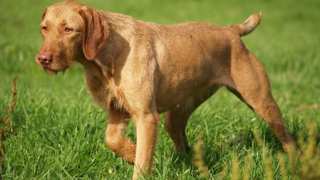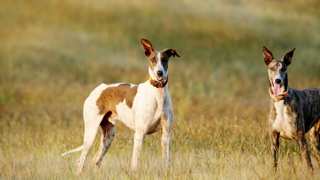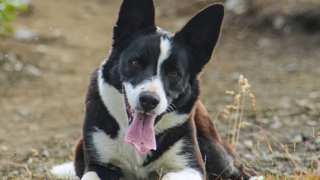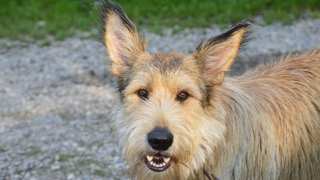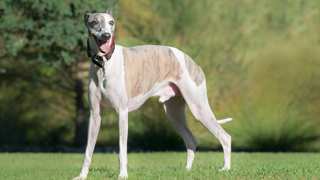While Lurchers have one constant parent breed in the Greyhound, they don't need to run all the time. As adults, however, they need a good run at least once a day and preferably one good walk. For the most part, they won't exercise on their own, and they prefer to be with their people.
These dogs should not be exercised too strenuously prior to the age of one, and perhaps not before 15 months old. Doing so can invite arthritis later in life. A good rule of thumb among Lurcher owners has long been to only exercise the puppies for five minutes per month they have been alive. In other words, if they are 3 months old, 15 minutes of walking or physical activity will do for a single period. As puppies, these dogs can be hyperactive, and limiting formal exercise in order to tire them out can be difficult. If they are left to lie around the house, they will do just that. Collars should be carefully selected: not too heavy to injure the neck but not so slender or loose as to allow them to slip the narrow head out. These dogs must be carefully yet firmly restrained when exercising as they have a very strong prey drive and run extremely fast.
The best Lurcher exercise is simple: running! If you have a large yard and it is very well fenced, this can allow for puppies to free play and adults to run a bit. Such a fence should be at least six feet high as these dogs can jump high. There is a right amount of exercise these dogs absolutely need on a daily basis, and with trial and error you'll find it. The basic guidelines are that if they nap a long time afterward, they are getting enough. If they are tearing up the house, then they need more.
Walking: A great alternative and one that should be done at least once a day.
Sprints: Lurchers like to do a flat-out dash once a day or so, and without obstacles or any bells and whistles.
Jumping: They'll easily jump over a low fence, so why not offer some obstacles for them to jump? Make sure they are round-topped to help prevent injuries, and don't do this until they are at least 15 months old.
There's little that can be done to lessen the amount of exercise these dogs need. Keeping them mentally occupied during the day is a good thing, especially when they are pups and need to be stimulated but not allowed to injure themselves. Chew toys help greatly, as do basic agility games. They are hunters who will love a ball or other toy that allows them to run after it.
